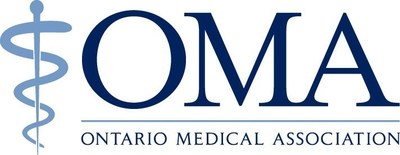Subjects: SVY, AVO
OMA proposes three immediate solutions for Ontario's health-care system
TORONTO, Sept. 15, 2022 /CNW/ - Ontario's doctors have recommended to government three timely solutions for some of the most pressing issues in health care.
Comprehensive repairs to Ontario's health-care system will not be quick or easy. The Ontario Medical Association has a detailed roadmap for what needs to be done over the next four years, Prescription for Ontario: Doctors' 5-Point Plan for Better Health Care.
But there are some steps we can take now that will make a difference to patient care in the short-term, by dealing with the supply of health-care workers, shortening wait times and expanding access to palliative care.
The OMA's "three solutions" government could implement now are:
- Licensing more foreign-trained physicians, through increased residency spots and a government practice-ready assessment program
- Moving ahead urgently with the creation of Integrated Ambulatory Centres for less complicated outpatient surgeries and procedures to ease the burden on hospital and reduce wait times. The OMA is ready to work with the government now to create a centralized referral system so that patients, regardless of where they live and those in most need of high-demand surgeries and procedures, are distributed among all available doctors
- Creating more hospice beds and palliative care services to improve the patient experience, support caregivers and reduce pressures on emergency departments
"These are solutions that can be implemented now and will have system-wide impact and improve patient care," said OMA CEO Allan O'Dette. "Bigger reforms are needed and we have to start somewhere."
The shortage of physicians and other health-care workers, many of whom are suffering from burnout after three years on the front lines of the pandemic, has contributed to long waits and closures of emergency departments this summer. In addition, too many Ontarians lack access to a family doctor.
The OMA supports measures to give temporary licences to physicians from other provinces. But more can be done. Mechanisms exist for licensing U.S.-trained family physicians and specialists who want to work in Canada and family physicians educated in countries such as Ireland, Britain, New Zealand and Australia, whose training is similar to Canada's.
But there are many other qualified doctors anxious to practice here. The OMA recommends that doctors from other countries who are landed immigrants and who have completed the examination program of the Medical Council of Canada be allowed to practice under the supervision of another family doctor for three or four years. This could also be a solution for Canadian physicians trained overseas who have not completed their residency. Both groups should then be allowed to compete for an expanded number of medical residency spots for internationally educated physicians.
Ontario's doctors say we must also reduce the backlog of care created during the pandemic and reduce wait times, many of which were too long even before COVID. Integrated Ambulatory Centres have been shown to have faster recovery times, lower infection rates and efficiency gains ranging from 20 to 30 per cent compared with inpatient hospital care. These centres would operate on a not-for-profit basis within the Canada Health Act and provide publicly funded OHIP-insured surgeries and procedures.
The third OMA solution is to make palliative care available when it is needed by increasing the number of hospice beds and providing consistent funding to operate them. Of the more than 100,000 people who died in Ontario in 2017-18, only 61 per cent received palliative care in their final year. Ontario should have about 945 to 1,350 palliative-care beds province-wide, but there are only 271.
We also need to enhance supports to allow people to receive palliative care where they need it, including at home. That means having access to on-call palliative specialists who are available when patients most need them. And we need to integrate palliative care within long-term care homes. The OMA would also like to see more training to increase the number of palliative care health professionals and workers.
Ontario spends more than $208 million a year on dying inpatients who are waiting for a bed in a more appropriate care setting. Ontario's doctors think this money could be better spent on the beds and resources these individuals were waiting for ? beds in long-term care, hospices and hospital-based palliative care units, or home care.
The Ontario Medical Association represents Ontario's 43,000-plus physicians, medical students and retired physicians, advocating for and supporting doctors while strengthening the leadership role of doctors in caring for patients. Our vision is to be the trusted voice in transforming Ontario's health-care system.
SOURCE Ontario Medical Association
These press releases may also interest you
|
News published on and distributed by:




